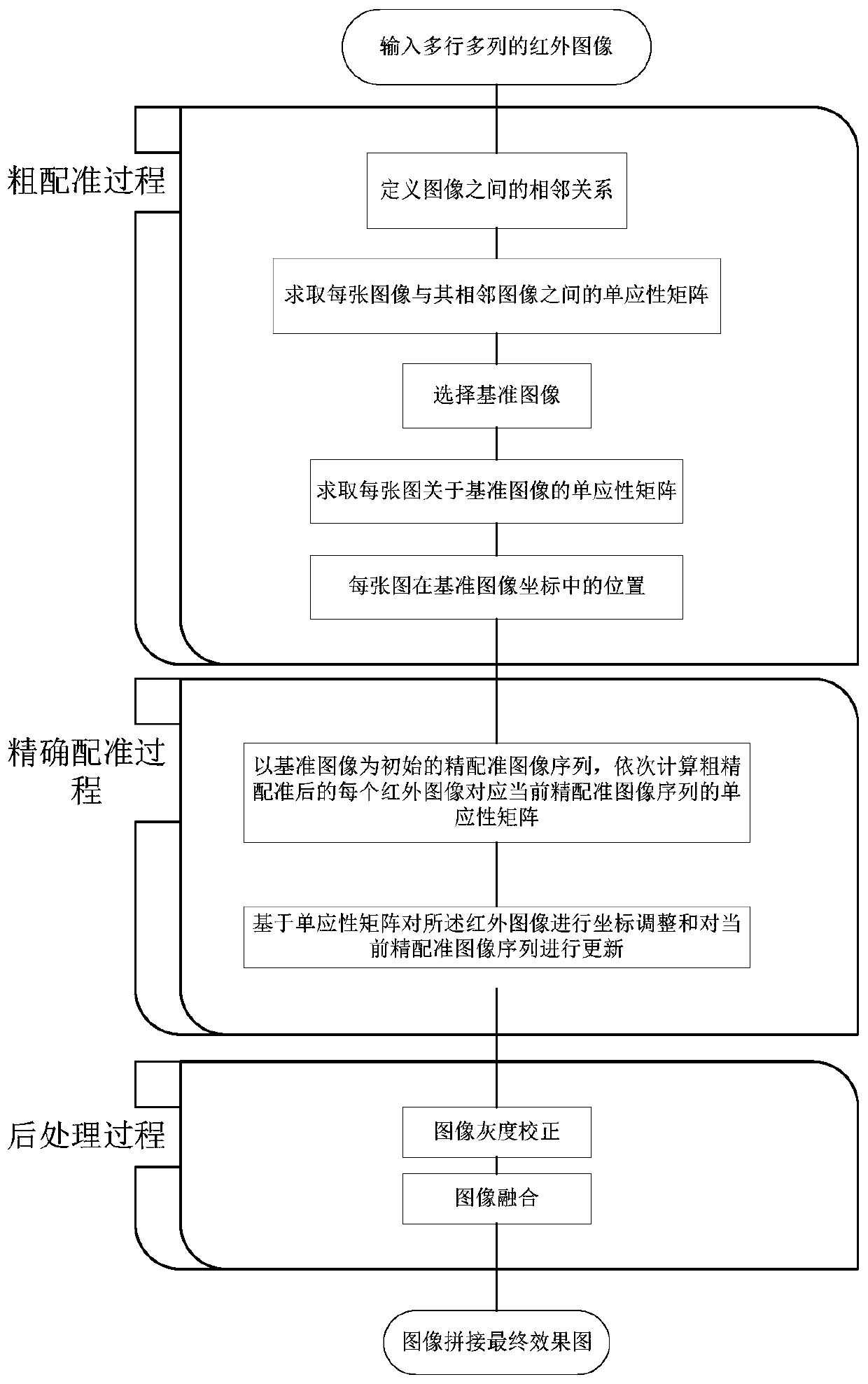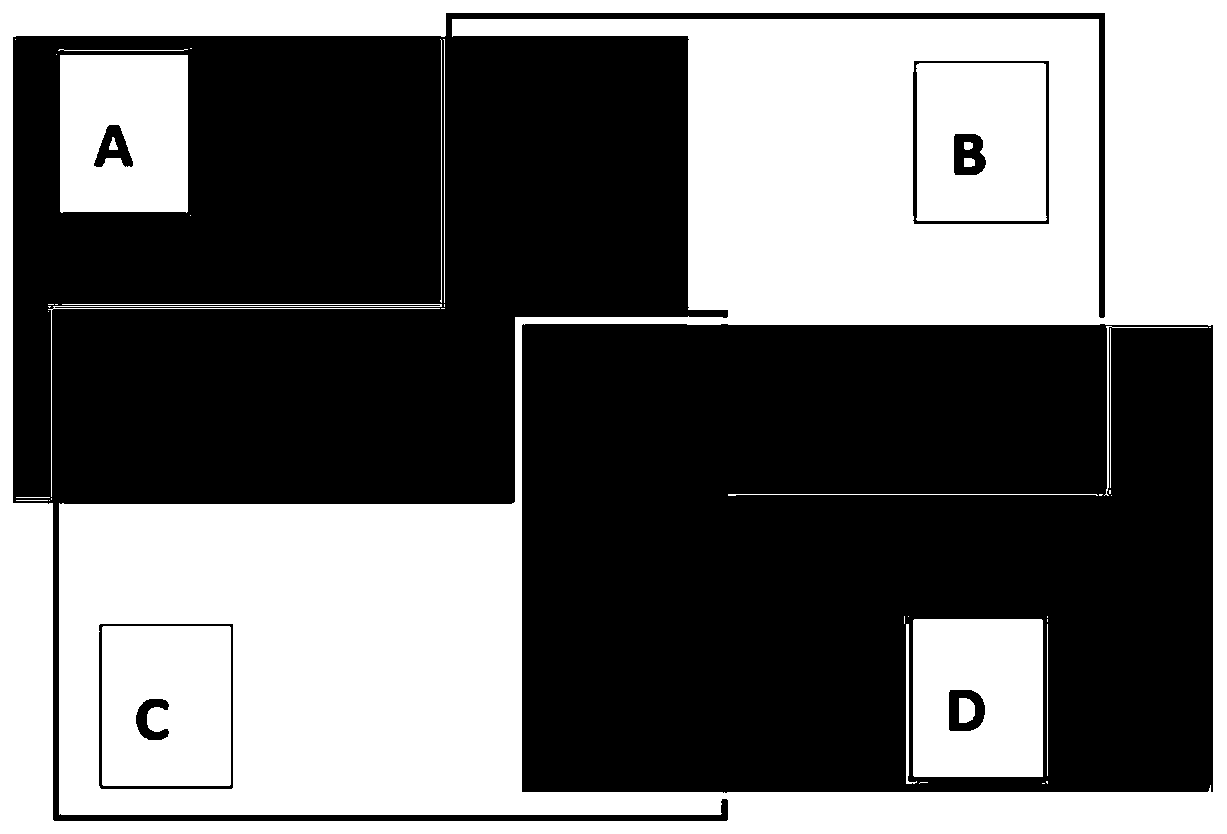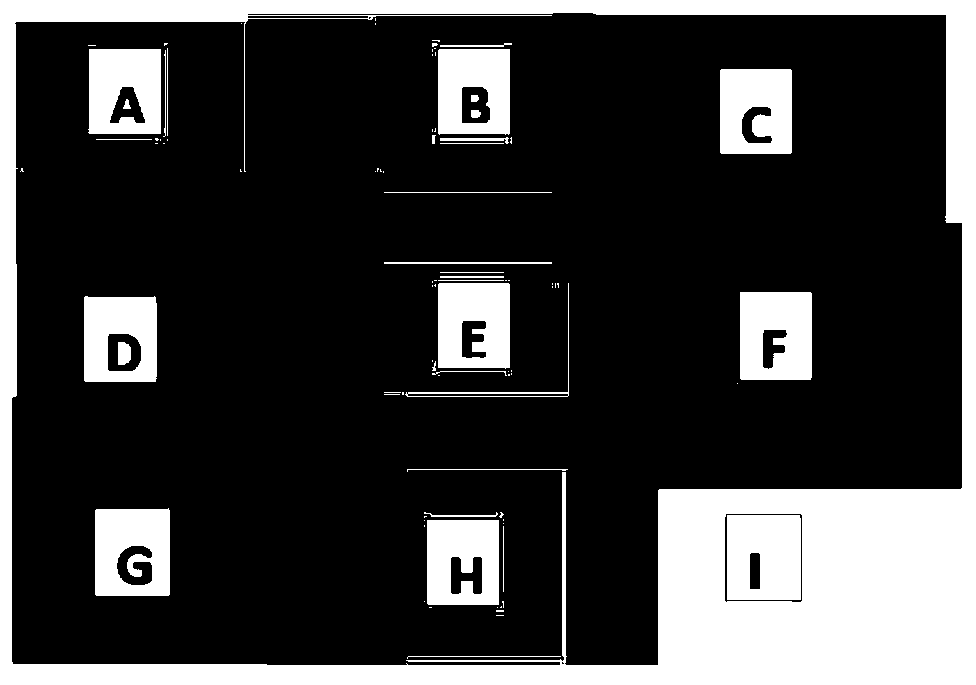An infrared image splicing method based on coarse-to-fine registration
An infrared image and reference image technology, applied in the field of infrared image stitching, can solve the problems of poor image stitching effect, low image registration accuracy, and low contrast of infrared images.
- Summary
- Abstract
- Description
- Claims
- Application Information
AI Technical Summary
Problems solved by technology
Method used
Image
Examples
Embodiment Construction
[0073] The present invention will be further described below in conjunction with examples.
[0074] The present invention is aimed at splicing infrared images of multiple rows and columns, and there must be a continuous adjacent relationship between the images to be spliced. An infrared image mosaic method based on coarse-to-fine registration provided by the present invention includes three main steps: image coarse registration process, image fine registration and post-processing process, specifically as figure 1 shown, including the following steps:
[0075] S1: Acquire the infrared images to be stitched and obtain the adjacent relationship between all images based on the overlapping area. Wherein, the present invention judges whether it is an adjacent relationship according to whether there is an overlapping area between the images, and if there is an overlapping area, it is an adjacent relationship. like figure 2 As shown, the rectangles A, B, C, and D represent four im...
PUM
 Login to View More
Login to View More Abstract
Description
Claims
Application Information
 Login to View More
Login to View More - R&D
- Intellectual Property
- Life Sciences
- Materials
- Tech Scout
- Unparalleled Data Quality
- Higher Quality Content
- 60% Fewer Hallucinations
Browse by: Latest US Patents, China's latest patents, Technical Efficacy Thesaurus, Application Domain, Technology Topic, Popular Technical Reports.
© 2025 PatSnap. All rights reserved.Legal|Privacy policy|Modern Slavery Act Transparency Statement|Sitemap|About US| Contact US: help@patsnap.com



